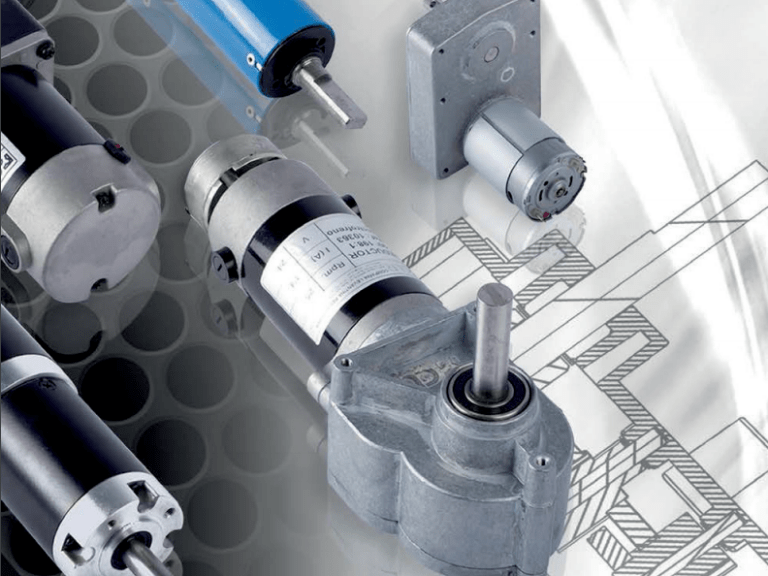How Actuators Contribute to Energy Efficiency in Electric Vehicles

Electric vehicles are leading today’s automotive innovation. Among their many components are actuators — small devices yet powerful. These motion devices play many roles, but a significant one is in making EVs more energy-efficient. Consequently, they help ensure you can travel far distances on a single charge.
Many EV owners will praise the battery capacity for the vehicle’s performance, but much thanks should go to the actuators. Let’s explore just how actuators boost the energy-saving features of modern electric vehicles.
Actuators’ role in Aerodynamics
Aerodynamics is vital for electric vehicles (EVs), as the better the airflow, the less energy the car uses. Electric actuators are significant here because they move and adjust different car parts to improve airflow. For example, you’ll find motion devices in the front grilles and rear spoilers, ensuring they stay at the right angles.
Notably, these adjustments aren’t static. Instead, actuators work in real time. As the EV speeds up or faces strong winds, the actuators immediately make quick adjustments. All of these ensure the car always gets the best possible airflow.
Better aerodynamics means the EV’s engine uses less power, and this has direct benefits for the battery. Particularly, the battery won’t drain quickly, meaning the car can go further on one charge. If you own an EV, this is a big plus. You won’t need to charge often.
Overall, actuators help improve a car’s aerodynamics, which in turn boosts battery life.
Actuators in Battery Management Systems
As stated, the battery is the main component in every electric vehicle. It’s more or less the heart of the vehicle since that’s where power comes from. Without question, the battery needs optimal care and monitoring. For that, manufacturers employ battery management systems, where actuators also play a major role.
Actuators in these systems focus on two main tasks: cooling and optimizing. Batteries can get hot, especially during long drives or when you’re fast charging. Of course, this too much heat can result in damage. With actuators controlling the cooling systems, batteries can stay at safe temperatures. This cooling process is vital, as it ensures the battery works well and lasts longer.
When it comes to optimization, it’s a similar story. Batteries have many cells, and each has a charge level. It’s important that these charge levels stay equal, and actuators help ensure the balance. The motion devices ensure each cell works efficiently and there’s no energy waste. This is key for an EV because it means the battery provides steady power for the car to run smoothly.
To give a rundown, actuators in battery management systems keep the battery cool and balanced. Both these tasks are crucial for the battery to last longer and undoubtedly contribute to energy efficiency in electric vehicles.
Motion Devices in Regenerative Braking Systems
One of the standout features in modern electric vehicles is regenerative braking. Instead of wasting the energy produced during braking, EVs reuse it. It’s groundbreaking for optimization, but without actuators, it won’t work so well.
How do actuators come into the picture? Well, when you hit the brakes, the car produces energy. In traditional vehicles, this energy turns into heat and gets lost. But EVs do things differently. They use actuators to convert the braking energy back into electrical power.
The above sounds complex, but it’s a rather simple process. As the car slows down, the actuators work with the braking system to turn the motor in reverse. This action generates electricity, which goes back to the battery.
The benefits of this process are significant. Every time you brake, your car’s battery gets a little boost, meaning as you go on long trips, you’re sending energy back into the battery — even if little. The result is increased driving range. You can travel a few more miles with the same charge by simply using the brakes.
It’s clear actuators play a pivotal role when it comes to regenerative braking. Basically, they help EVs capture and reuse energy, which boosts their efficiency and extends mileage.
Climate Control Systems
Everyone wants to keep their cars’ interior comfortable, regardless of the weather outside. Normally, this comfort comes at the cost of extra energy use. However, in electric vehicles, things are different thanks to actuators. These motion devices are highly efficient when it involves climate control.
Actuators help adjust the heating and cooling systems of an EV. You simply set your desired temperature, and the devices ensure it’s maintained. They control vents, fans, and heaters with quick and precise adjustments. The latter is critical because it means the system doesn’t overwork, and that helps conserve energy.
Besides saving energy, there’s also the benefit of comfort. Since actuators help ensure a steady temperature, you won’t witness sudden blasts of hot or cold air. Instead, what you get is a consistent and comfortable environment inside your car.
You may ask, why is this so crucial in EVs? Well, the answer is Energy. Every bit of power saved by the climate control system means more miles on the road for the car. So, with efficient heating and cooling handles by actuators, EVs can travel longer distances.
All in all, actuators in climate control systems strike a balance for both the EV and drivers. They ensure you’re comfortable and, at the same time, optimize energy use.
Conclusion
Actuators no doubt appear small when you consider other giant parts in electric vehicles. However, their role is the opposite. As explained, these motion devices enhance aerodynamics and optimize battery management systems. Additionally, they help with efficient climate control and energy-saving braking systems. consistently make a difference. With the above, it’s unquestionable that these actuators are vital in the performance of electric vehicles.
